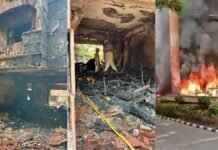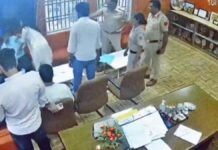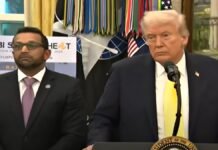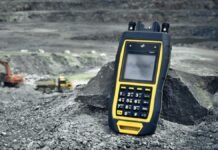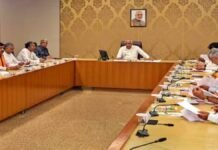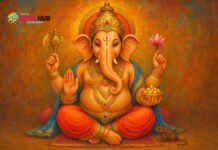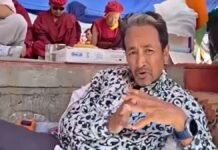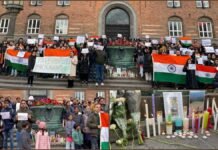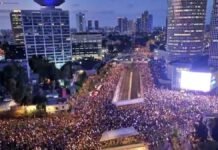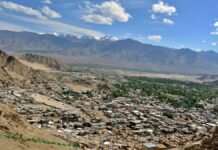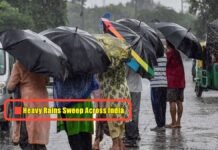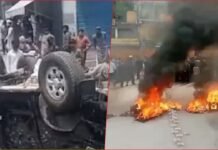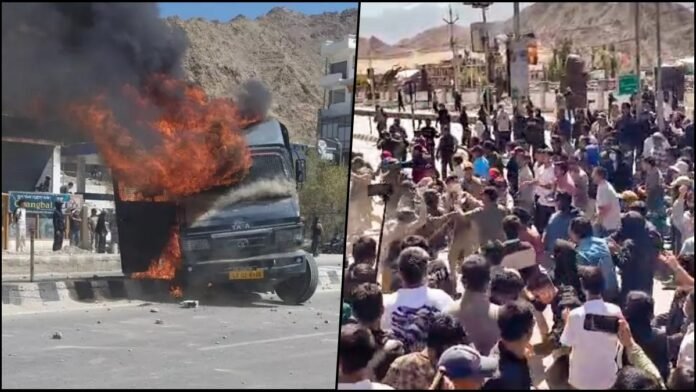
Key Points:
- Protests led by the Leh Apex Body (LAB) youth wing turned violent in Leh on Wednesday, September 24.
- Demonstrators clashed with police, pelted stones, and set a police vehicle and a portion of the BJP office on fire.
- The violence erupted after two of the 15 people on a 35-day hunger strike were hospitalized due to deteriorating health.
- Police responded with tear gas and baton charges to disperse the crowd.
- Climate activist Sonam Wangchuk, who was part of the hunger strike, appealed for peace and an end to the violence.
- The Union Home Ministry has scheduled the next round of talks with Ladakhi leaders for October 6.
New Delhi: Protests in Leh over demands for statehood and constitutional safeguards for Ladakh turned violent on Wednesday, as demonstrators clashed with police, pelted stones, and set fire to a police vehicle and part of the local BJP office. The escalation followed a protest call by the youth wing of the Leh Apex Body (LAB) after two of the 15 people on a hunger strike were hospitalized, prompting a large-scale shutdown and clashes.
The protest, part of a long-running agitation for statehood for Ladakh and its inclusion in the Sixth Schedule of the Constitution, saw a significant escalation on Wednesday morning. The youth wing of the Leh Apex Body (LAB) had called for a protest and shutdown after the health of two hunger strikers, who had been fasting since September 10, worsened, requiring their hospitalization on Tuesday evening.
VERY SAD EVENTS IN LEH
— Sonam Wangchuk (@Wangchuk66) September 24, 2025
My message of peaceful path failed today. I appeal to youth to please stop this nonsense. This only damages our cause.#LadakhAnshan pic.twitter.com/CzTNHoUkoC
Hundreds of young protesters gathered and marched, with the situation turning volatile as they clashed with police. Reports and videos from the scene showed demonstrators pelting stones at police and attempting to storm the office of the Ladakh Autonomous Hill Development Council (LAHDC). A police van was set on fire, and smoke was seen rising from the local BJP office, which was also targeted by the crowd. In response, police deployed additional forces, used tear gas, and resorted to baton charges to bring the situation under control.
The Demands and the Hunger Strike
The core demands of the protesters, represented by the Leh Apex Body (LAB) and the Kargil Democratic Alliance (KDA), are full-fledged statehood for Ladakh and its inclusion under the Sixth Schedule of the Constitution. This would grant the region greater autonomy and safeguards for its unique cultural and tribal identity.
The agitation has been ongoing for years but gained renewed momentum with a hunger strike led by climate activist and educator Sonam Wangchuk. He has been on fast for over two weeks, part of a larger relay hunger strike that began on September 10. Before the violence, Wangchuk had warned that public patience was wearing thin over the perceived delays in dialogue with the central government. He emphasized that the BJP had promised to fulfill these demands and should do so before the upcoming Hill Council polls.
Reactions and Next Steps
In a video message posted on X (formerly Twitter) after the violence broke out, Sonam Wangchuk appealed for peace and urged the youth to end the violence. Kargil leader Sajjad Kargili called the events “unfortunate” and blamed the “failed UT experiment” for the rising frustration, urging the government to resume dialogue and fulfill the demands.
The Union Ministry of Home Affairs (MHA) has announced that the next round of discussions with the Ladakhi delegation, comprising members of both LAB and KDA, is scheduled for October 6. The last round of talks was held on May 27, which led to the introduction of a domicile policy but left the core demands unaddressed. In solidarity with the protesters in Leh, the KDA has called for a complete shutdown in Kargil on Thursday.


